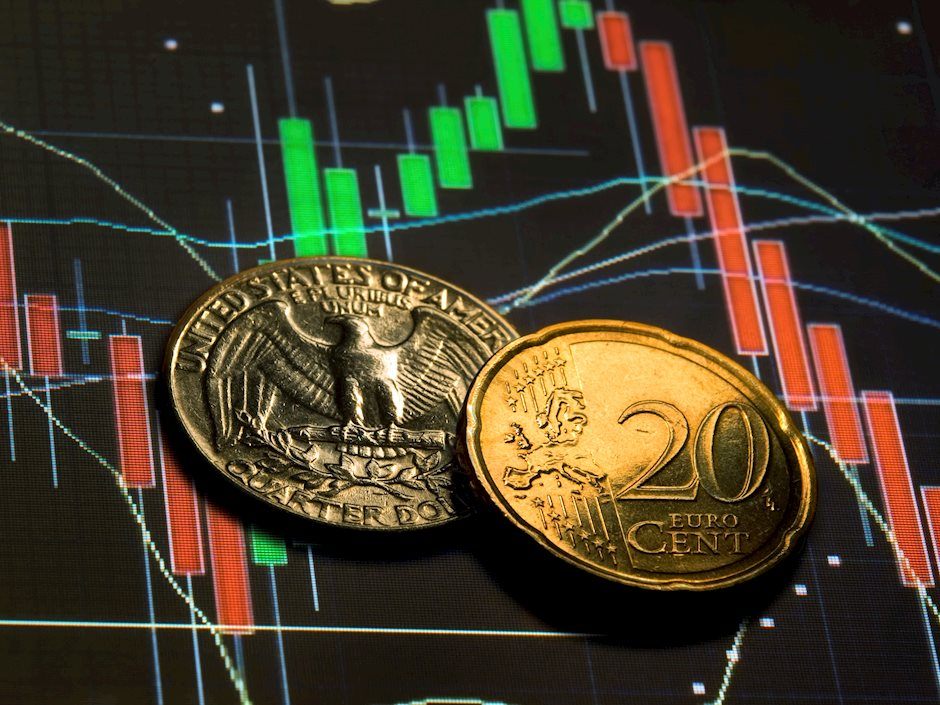EUR: My banks are better than yours

As I analyse the current news flow regarding the continuing banking sector turmoil, I observe that the EUR has been able to regain its recent losses against the USD. This is due to the resilience demonstrated by Eurozone banks, which has boosted the credibility of the ECB's hawkish stance. Meanwhile, the US rates markets have scaled back their Fed rate hike expectations and front-loaded rate cut expectations. Consequently, the nominal and real EUR-USD rate spreads have noticeably widened in recent days, suggesting further upside potential for EUR/USD in the next three to six months.
Despite my constructive outlook for the pair, I believe that caution is still warranted in the near term. I anticipate that the Fed may follow in the footsteps of the ECB and hike rates on Wednesday about 25bp, pushing back against the aggressive market rate cut expectations. This could be seen as a hawkish surprise and boost the appeal of the high-yielding, safe-haven USD. Moreover, I will be focusing on the German ZEW for March as well as speeches by the ECB's Christine Lagarde and Francois Villeroy. FX investors will be scrutinizing any indications of the negative impact from the banking sector turmoil on investor and business sentiment in Europe's largest economy. I acknowledge that any potential data disappointments today could see market demand for the EUR cooling down. The USD could also consolidate if cautiousness returns to FX markets ahead of the Fed meeting.
AUD: RBA’s April meeting still data dependent
As I analyse the RBA Minutes to the March meeting, I can see that the Board is considering a pause in rate hikes for the upcoming April meeting. It has stated that it will "reconsider" this case next month. However, the rest of the Minutes were mixed, with the RBA acknowledging that some important data had surprised to the downside before the meeting. Still, the Board also noted that these surprises were small and that data in other countries had similarly softened only to rebound later. While the cash rate was in restrictive territory, the RBA also highlighted that it was lower than in other countries, which affects financial prices such as the exchange rate. Consumption had also softened, but it was still uncertain how much households will draw down on high savings to maintain their consumption.
Despite this mixed data, the RBA ultimately decided to raise the cash rate by 25bp in March for four reasons.
First, the labour market remained tight, with the unemployment rate near 50-year lows. Second, wages growth accelerated, and low productivity growth was keeping per unit wage cost growth high, which could lead to inflation being more persistent than expected.
Third, business conditions remained above average, and capacity utilization at firms high. Lastly, while inflation had peaked, it remained too high. The Board also noted that the RBA's forecasts for inflation to fall to the top of its target band by 2025 also assumed further rate hikes.
The RBA has indicated that the timing of a rate pause will depend on various factors such as business conditions, labour market, inflation, and retail sales data. Already, labour market and business conditions data suggest that the RBA should keep hiking rates. Business conditions only retreated by 1ppt in February and remain well above average, while capacity utilization remains at 85%. In addition, Australian employment growth rebounded strongly in February, with the unemployment rate dropping to 3.5%, just 10bp above a 50-year low.
In the coming week, retail sales and monthly CPI data will be the deciding factors in the RBA's April decision. The February CPI will include domestic services inflation data, which was not in the January data and could potentially show some recovery in inflation. Although the market is pricing in a 20% chance of a 25bp rate cut by the RBA in April, I would expect yesterday's dovish set of RBA Minutes to only have a modest impact on the AUD.
CAD vs pullbacks in inflation, energy prices and rate spreads
I have observed that the CAD has held up relatively well in comparison to other oil-sensitive G10 currencies, even as energy prices continue to be under downside pressure.
However, it would take a significant upside surprise to persuade the BoC to resume rate hikes, as they have put a conditional pause on them. The latest BoC minutes, due to be published on Wednesday (today), could provide more insight into what could trigger the bank to resume its rate hikes.
With major central banks pricing out additional tightening prospects, the BoC could also decide to remain put. Although the CAD has not yet benefitted from the narrower/shorter expected divergence between the BoC and the Fed, the tightening in rate spreads to one of its smallest points in the past six months could ultimately help USD/CAD to retrace lower once market jitters subside.
Author

ACY Securities Team
ACY Securities
ACY Securities is one of Australia's fastest growing multi-asset online trading providers, offering ultra-low-cost trading, rock-solid execution, technologically superior account management and premium market analysis. The key pi

















